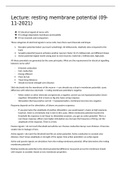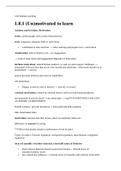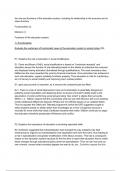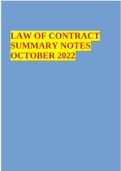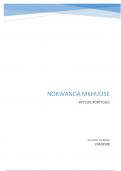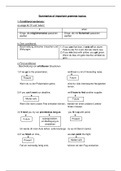11-2021)
H2 electrical signals of nerve cells
H3 voltage-dependent membrane permeability
H4 ion channels and transporters
Three categories of electrical signals in nerve cells, have there own timescale and shape:
1. Receptor potential (when you touch something); 40 milliseconds, relatively slow compared to the
brain
2. Synaptic potential (neuron activates another neuron); faster 10-15 milliseconds, and different shape.
3. Action potential (signal travels along axon to next neuron); really fast 2 milliseconds, high peak.
All these potentials are generated by the same principles. What are the requirements for electrical signalling
between nerve cells?
- Directed conduction
- Fast conduction
- Energy efficient
Must be fast
Travel long distances
Should not loose strength over distance
Stick electrode into the membrane of the neuron -> you already see a drop in membrane potential; cause
difference with reference electrode -> resting membrane potential is negative.
- When switch on other electrode and generate a negative current you see hyperpolarization (more
negative). Stimulation that is twice as big also twice as big response.
- Stimulation that has positive current -> hypopolarization, membrane becomes less negative.
Response depends on the stimulation, all above are passive responses.
- If you give twice the amplitude of positive stimulation, you would expect a twice as high response,
however, there is a threshold, that is met in this cause. When membrane potential reaches the
threshold the response is not linear to stimulation anymore, you get an action potential. This is a
non-linear response. When even higher stimulation you increase the frequency of firing, not the
amplitude of the response. There is a limit.
Passive signals = do not reach threshold and will die out. Passive conduction decays over distance. It become
weaker due to leakage of ions.
Active signals = do reach the threshold and fire an action potential. Active conduction is constant over
distance. Don’t loose amplitude or strength of the signal. Only action potential is an active signal.
Active and passive signals are deviations from the resting membrane potential. What determines the resting
membrane potential?
Resting membrane potential is the electrical potential difference measured across the membrane (inside
with respect to outside). Based on two membrane properties:


